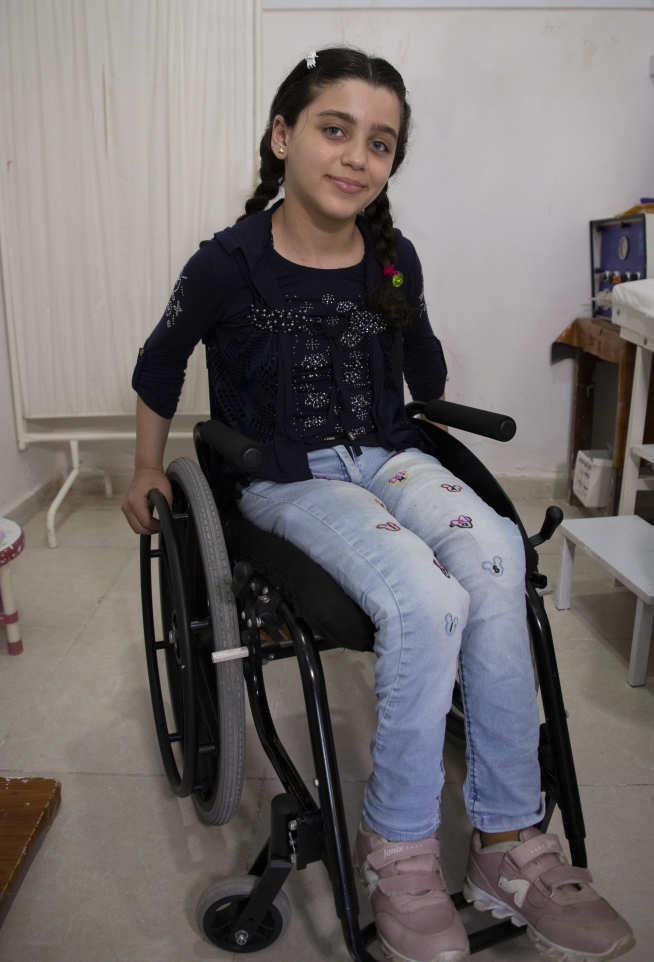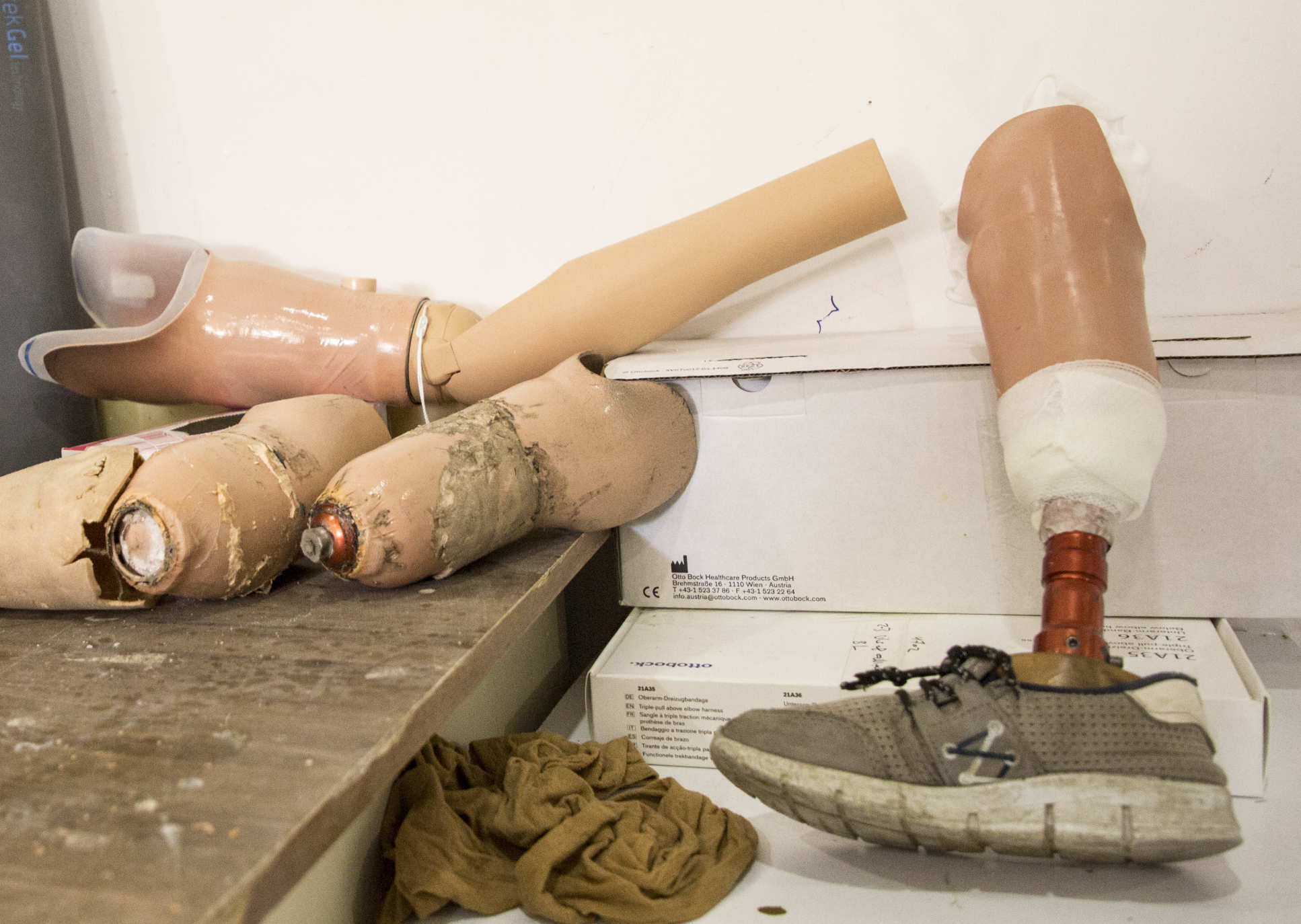First manual on child blast injuries launched by Imperial and Save the Children
A coalition of British doctors, researchers and charities has launched the world’s first guide for treating children severely injured by explosives.
The Paediatric Blast Injury Field Manual – designed for medics in war zones who often lack specialist training – is the first comprehensive guide to injuries suffered by children from weapons like airstrikes, artillery and landmines.
It was developed by the Paediatric Blast Injury Partnership (PBIP), a coalition of doctors and experts founded by Save the Children and Imperial College London’s medical military historian Dr Emily Mayhew.
Save the Children’s partner Syria Relief began distributing the manual for the first time in May 2019 to emergency units across northwest Syria, including Idlib and Aleppo. The guide will be deployed later in 2019 to other conflict zones including Yemen and Afghanistan.
Child-specific
Many of the injuries happen when children pick up and play with unexploded devices that have been left behind. Dr Emily Mayhew Centre for Blast Injury Studies, Department of Bioengineering
Children are seven times more likely to die from blast injuries than adults involved in fighting. They are also 50 per cent more likely to be victims of blast injury after conflicts are over than during conflicts, as this is when children are allowed to go outside and play again.
Dr Mayhew, of Imperial’s Centre for Blast Injury Studies, said: “Many of the injuries happen when children pick up and play with unexploded devices that have been left behind.”
Children also tend to suffer more internal damage, as their underdeveloped skulls and muscles offer less protection to the brain, lungs, and organs – even when no damage is immediately obvious.

Amputated limbs must also be managed carefully. Bones will continue to grow as the child grows so wounds must be regularly opened for the bone to be shaved down. The manual could help medics know where and how to amputate to reduce disability and pain later in life.
Co-author Dr Malik from Syrian Relief, who is currently leading distribution of the manual to Syrian doctors, said: “For more than eight years we’ve seen children dying on the operating table from wounds that adults have survived. The tragedy is these deaths could have been prevented with basic training.
"This manual is designed for anyone with a medical degree and a scalpel. I’m excited this is going to doctors in Syria. It’s a simple solution that will undoubtedly save lives.”
Psychological toil
You expect to treat injured soldiers, and even civilian adults. But the sights and sounds of a young child torn apart by bombs are something else. Dr Paul Reavley Lead author of the manual
The manual tackles psychological, as well as the physical, challenges of child blast injury. Tips can be as simple as exchanging names with the child being treated and keeping their caregiver beside them for as long as possible.
Lead author of the manual Dr Paul Reavley from Bristol Royal Hospital for Children, who is a former military doctor, said: “I’ve seen medics overcome with emotion when children come in with blast wounds. In a war zone, you’re mentally prepared for the adults. You expect to treat injured soldiers, and even civilian adults. But the sights and sounds of a young child torn apart by bombs are something else.
“I remember in Afghanistan having to resuscitate an eight-year-old girl, who had three limbs blown off by an IED. She was about the same age as my own daughter. I’m a trained paediatrician, but that connection shook me hard. And it hits you just when your mind needs to be at its clearest.
“Until this manual, there really hasn’t been anything to prepare doctors for dealing with the horror of children injured by blasts. For the first time it tackles psychological, as well as the physical, challenges. It’s not just a guide to practical procedures – it’s a crucial emotional crutch.”
Adults vs children
The heart of the manual is in providing guidance to field medics from the point of wounding to the point of discharge, including psychological care. Dr Emily Mayhew Centre for Blast Injury Studies, Department of Bioengineering
Most medics in war zones are trained to treat injured soldiers, who are fit and healthy adults. This manual will help these medics apply their existing knowledge to children, who often require different, child-specific treatment.
Dr Mayhew highlighted the need for specific treatments geared towards children who’ve suffered blast injuries – an area of medicine that’s sorely lacking in knowledge: “The heart of the manual is in providing guidance to field medics from the point of wounding to the point of discharge, including psychological care.”
She also points out that although meant initially for conflict zones, the manual can be used in many other contexts – for example when treating child victims of terrorist attacks like those of the Manchester Arena bombings in May 2017.
She added “This isn’t a war manual – it’s a blast injury manual, and blast injury can happen in almost any context.”
Making children off limits
Step-by-step instructions cover situations ranging from resuscitating children on the battlefield and saving limbs, to rehabilitation and psychological care. The handbook is durable, lightweight, and readable in low-light conditions.
To coincide with the announcement of the manual, Save the Children are launching a new campaign to #StopTheWarOnChildren, urging the UK to make children off limits in war.
Among its recommendations, the charity is calling for a new ‘strategy to protect children’ that lays out exactly how the Government could keep children safe from the horrors of modern conflict.
That would include measures to avoid the use of indiscriminate explosive weapons in populated areas; a commitment to suspend arms sales where there is a risk they may be used to kill or injure children; and support for a Global Paediatric Trauma Register to better track trends in harm to children from military action by the UK or its allies.
This news item is based on a press release by Save the Children.
Images credited to Save the Children/Syria Relief/NSPPL, video credited to Save the Children.
Read more about the impact of blast injury on children here.
Article supporters
Article text (excluding photos or graphics) © Imperial College London.
Photos and graphics subject to third party copyright used with permission or © Imperial College London.
Reporter
Caroline Brogan
Communications Division